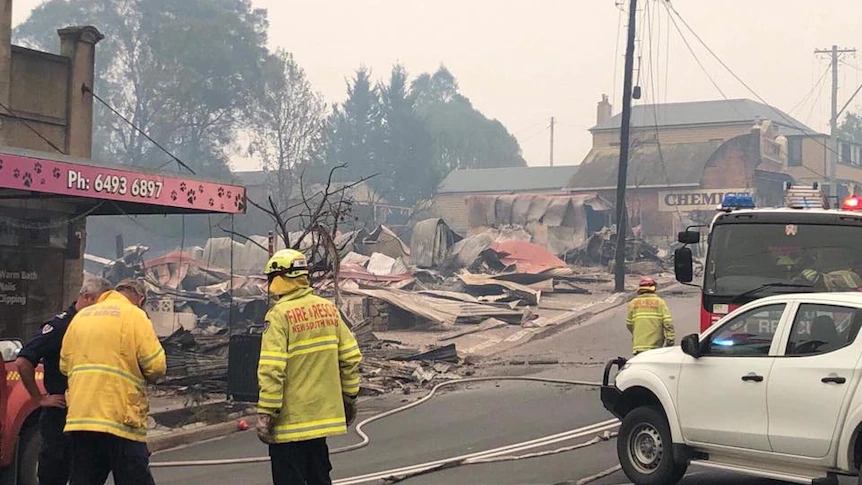
Cobargo Bushfire Recovery
Heritage Analysis
Heritage Advice
Heritage Impact statement
DunnHillam Architecture
Takt Studio for Architecture
Cobargo, NSW
Yuin Country
During the Black Summer of 2019–2020, the historic township of Cobargo on the NSW South Coast was severely impacted by bushfires resulting in the catastrophic loss of infrastructure, property and life.
In June 2021, the Cobargo Community Development Corporation received funding to rebuild part of Cobargo’s historic main street. The heritage conservation area had been severely impacted by the loss of several heritage listed properties and contributory items.
GML Heritage provided heritage consultancy services to DunnHillam Architecture + Urban Design and Takt Studio for Architecture for the development of designs for four new developments to be built within the historic precinct: a bushfire resilience centre, a village square, a market hall and a post office. The new development aimed to contribute to community recovery and revitalise economic and social activity in the town.
The project required a sound understanding of the town’s historical development and the significant attributes of its heritage buildings and historical streetscape, including subdivision patterns, scale, views, landscape elements, built forms, architectural styles and materials used, as well as the physical and social context of the buildings that were destroyed by the fires.
GML provided heritage advice throughout the design process, analysed the impact of the proposed developments on the surviving heritage items and conservation area and, recognising the need to improve resilience to bushfire and flood risk, provided recommendations to mitigate adverse heritage impacts.
The Rebuild Cobargo project won the Community Wellbeing & Diversity category at the Planning Institute of Australia’s 2023 NSW Planning Excellence Awards.
The awards jury cited: ‘At a time when more extreme weather events, such as bushfires and floods, are becoming more frequent, the Rebuild Cobargo project provides a model to build back better in a way that prioritises increasing community resilience and future needs. It shows the important role of inclusive, community-led planning in a post-disaster context.’

Artist’s perspective of the proposed new main street of Cobargo. Image: DunnHillam.



